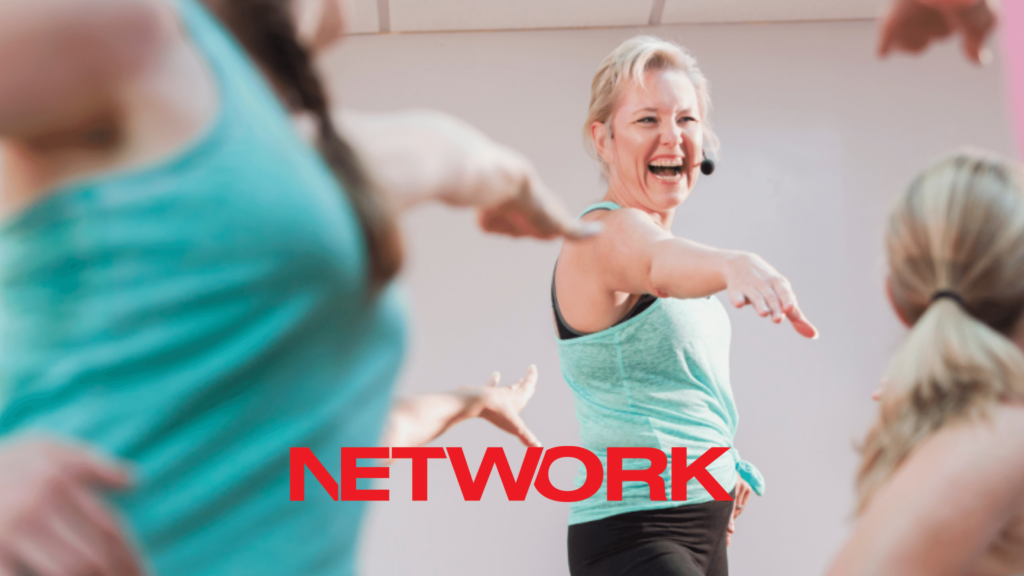The Fitness Zone

Let’s get started: creating great GX class intro’s
By crafting a unique, personalised class introduction, you can set a professional tone and reinforce the inclusive values of the facility you are instructing at, writes Group Fitness Instructor Mel Morony.
Bella’s phone pings with a new email message. On opening the app she sees that it’s from one of her managers detailing the results of that centre’s ‘shopping’ program for the previous month. Most of it is good, but there is a note that not every class is getting started on time and that not every instructor is introducing themselves, the class name and giving the medical warning at the start of class.
Bella cringes. She remembers her most recent aqua class at that centre. The class had started late because the swim club had been in the pool right until the last minute and the lane space hadn’t been available until after the scheduled time. By the time her participants got into the pool, she had been focused on getting the class started at the expense of the introduction spiel. She feels bad about letting the side down – though she does not view the class starting late as being her fault. There is a part of her that wishes that her manager would give her – and her colleagues – some pointers on how to remember to include the spiel, as opposed to the reminder to ensure that it is done. However, she doesn’t want to tell her manager how to do their job, so she lets it slide.
A bit of fluff?
When it comes to class introductions, it’s possible to see them as a ‘bit of fluff’ at the start of the class – the froth on the latte (hey, I live in Melbourne!). But is this fair? Let’s take a closer look at our class introductions, from why we have them, to how they can give a representation of the values of our facility/organisation – as well as how we can reduce the chances of forgetting to include them in our classes! In doing so, I am going to be referencing another industry on which people tend to spend their disposable income – tourism.
Why introduce the class?
The class introduction serves a number of functions, but primarily, it sets a professional tone for the session. Imagine boarding a plane and not being welcomed either as you board, or even collectively; not having the airline crew or at least a voiceover state the flight number, destination, introduce themselves or do the safety demonstration. You may know all of this information already, but it’s reassuring to have it confirmed. It’s similar for a group fitness class. The introduction is there to welcome our patrons to the class, confirm they are in the right place and build rapport with them. It may also give other details about the class, such as the duration, ‘survival’ advice to new participants and other information on what to expect – although you may prefer to provide this additional information later on as the class unfolds.
The medical warning
Current best practice for the medical warning is to say something along the lines of ‘If you have any injuries or medical conditions then you should have medical clearance.’ At one stage, there was a tendency to ask participants to tell instructors about their injuries or medical conditions, but this could put an instructor at risk of working outside of their scope of practice. This is the case particularly if someone has hurt themselves prior to attending class, but hasn’t seen a medical professional. If we allow people to tell us their injuries, it implies (unless we tell them not to participate) that they are fine to do the class. This can be particularly serious if we provide modifications that lead to the injury worsening, as it could be deemed as giving unqualified medical advice. This has resulted in successful lawsuits in Australia.
Stating that the patrons need medical clearance to do the class puts the onus onto them to have sought that permission from someone authorised to do that. From there, if they still choose to do the class, the liability for any deterioration of the injury/ condition cannot be put onto the instructor or the facility.
Taking ownership
We’ve looked at the ‘why’, now let’s look at the ‘how.’ How do you make sure that the class introduction is something that you do every time you teach, even on occasions when you are feeling stressed because the class hasn’t started on time or a new participant has come in at the last minute that requires some additional help to get set up?
I would suggest it is like anything that we aren’t likely to forget: find some ways to take ownership, even pride, in the class intro. While some facilities may give you a script, it is unlikely that they want you to follow it verbatim, as this would feel unnatural and probably be a bit boring for both you and your participants.
A professional tone
A couple of years ago I decided to give my class introduction a major overhaul. Up until then, my approach was to say, ‘Welcome to [insert class name], my name is Mel’ and then go into the medical warning spiel and check for new participants. It wasn’t wrong, but I felt that it could be given a more professional tone that also represented the values of the majority of the facilities I instructed at.
My passion for travel has resulted in me having something of an affinity with the tourism industry. In my time visiting numerous countries and participating in tours, I have noticed a difference in how we were greeted as guests. Some providers, especially guides on day trips, use very casual language, while others, particularly on airlines, greet their guests with a ‘Good morning/afternoon/evening ladies and gentlemen’ in English as well as in their main native language. The latter approach gave it a more professional tone, so I figured ‘why not do the same for fitness?’ After all, we are professionals in our roles, and our patrons have the choice as to whether they attend our class and facilities, so we must never take them for granted.
Incorporating the values
In the matter of a collective greeting, I decided that saying ‘welcome’ in each of the languages of the many cultures that are present in my classes wouldn’t work from a time point of view. Yet almost all of the organisations and companies I work for have ‘inclusion’ in their values. How could I represent that in my class introduction? I took inspiration from the New Zealand tourism industry, where the Maori greeting ‘Kia ora’ is used extensively. From there, I put an Australian flavour to it, using the word ‘Wominjeka’ which means ‘welcome’ in the language of the Wurundjeri people who are the traditional custodians of my local area in Melbourne.
Additionally, I added Auslan signing to my introduction. While I didn’t (and still currently don’t) have any hearing impaired people in my classes, including it in my introduction (and in the body of my classes where possible) is a way of further demonstrating the value of inclusion at that facility. In the case of a program such as aqua, which tends to be visible to the general public, consider what this may suggest to those people, particularly if they have a disability.
Inaugurating change
Like anything, making changes to the introduction took work and a lot of practice at home, and the first couple of weeks saw me slipping back into old habits. One solution was to get a colleague to hold me accountable, particularly on the verbal changes, which I found to be the hardest. When it came to including Auslan in the introduction, I effectively had my patrons hold me accountable. For the first week (and for any new or cover classes I now take) – I announced what I was about to do prior to the class starting. That way my patrons would know what the hand signals were about (this was prior to the bushfires and pandemic, when Auslan signers became very familiar to us). I also wanted to give them permission to correct me or add to my vocabulary if they knew Auslan.
Naturally, there are times when I vary my introduction a little. For example, St Patrick’s Day (I am of Irish heritage) when I greet my class with a ‘Dia Duit, fáilte’ which means ‘Hello, welcome’ in Irish Gaelic.
Having a class introduction that I take ownership of, and pride in, has resulted in me very rarely forgetting to include it at the start of my classes, even if a class has got off to a rocky start. It allows me to breathe, collect my thoughts and press ‘reset’ on the class. It also provides a unique selling point when I interview for a new facility and the values are discussed – which is a win-win for everybody.
Mel Morony
Mel is a group fitness instructor based in Eastern Melbourne. She is passionate about raising standards in the area of group fitness, for both participants and instructors.
Read more articles
Disclaimer: Where Certificate III in Fitness, Cert III/Cert 3, or Fitness Coach is mentioned, it refers to SIS30321 Certificate III in Fitness. Where Certificate IV in Fitness, Cert IV/Cert 4, or Personal Trainer is mentioned, it refers to SIS40221 Certificate IV in Fitness. Where Master Trainer Program™ is mentioned, it refers to Fitness Essentials and SIS40221 Certificate IV in Fitness. Where Master Trainer Plus+ Program™ is mentioned, it refers to SIS30321 Certificate III in Fitness and SIS40221 Certificate IV in Fitness. Where Certificate IV in Massage or Cert IV/Cert 4 is mentioned, it refers to HLT42021 Certificate IV in Massage Therapy. Where Diploma of Remedial Massage is mentioned, it refers to HLT52021 Diploma of Remedial Massage.











